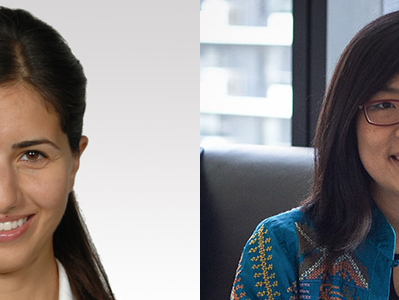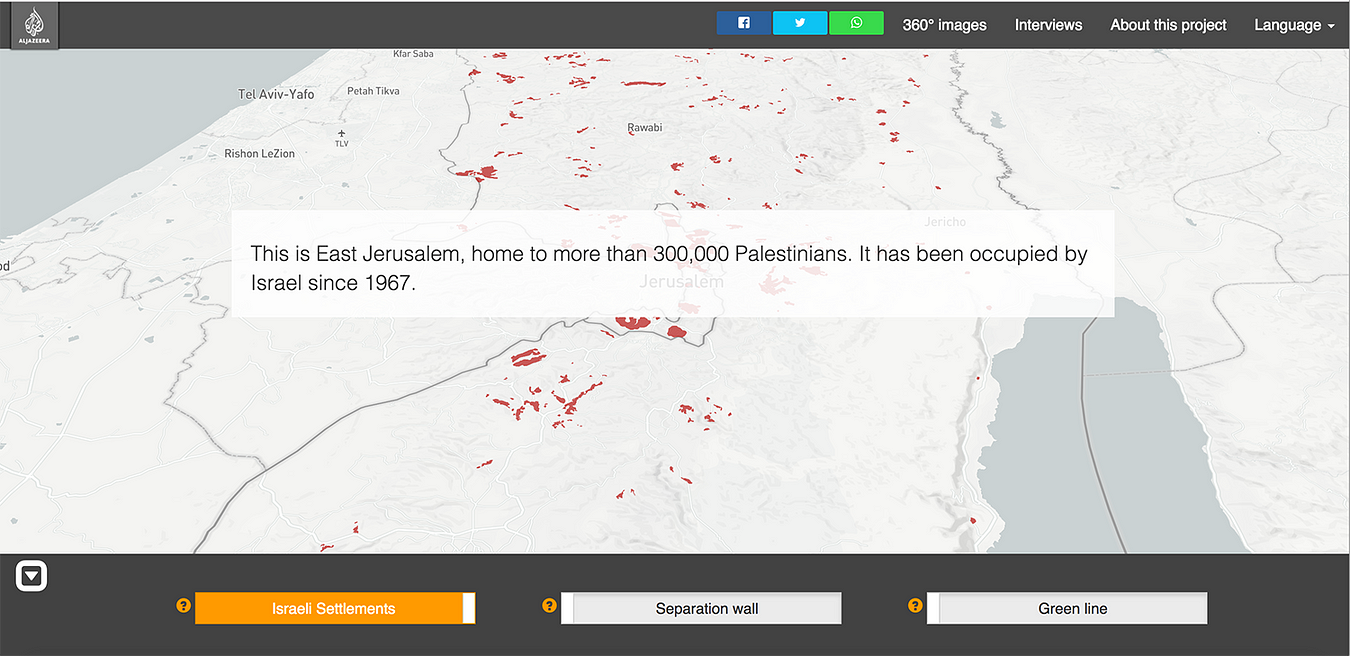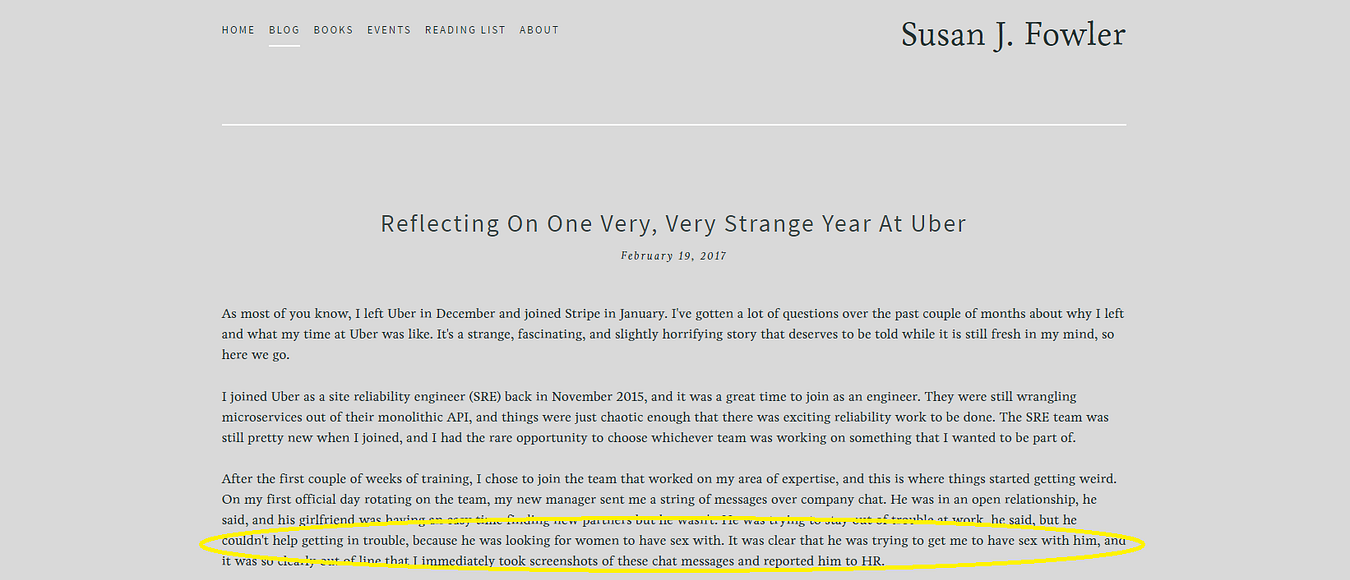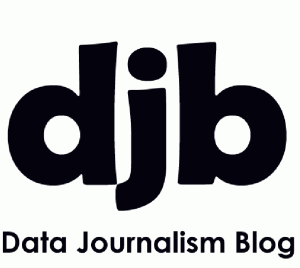This article was originally published on the Data Journalism Awards Medium Publication managed by the Global Editors Network. You can find the original version right here.
________________________________________________________________________________________________________________________
Stephanie Sy of Thinking Machines (Philippines), Yolanda Ma of Data Journalism China and Esra Dogramaci of Deutsche Welle, formerly Al Jazeera (Germany), new members of the Data Journalism Awards jury, talk innovation, data journalism in Asia and the Middle East, and women in news.

left to right: Yolanda Ma (Data Journalism China), Esra Dogramaci (Deutsche Welle, formerly BBC and Al Jazeera), and Stephanie Sy (Thinking Machines) join DJA Jury
We welcomed three new members to the Data Journalism Awards jury last year (pictured above). They are all women, strong-willed and inspiring women, and they represent two regions that are often overlooked in the world of data journalism: Asia and the Middle East.
What was your first project in data journalism or interactive news and what memory do you keep from it?
Esra Dogramaci: In 2012, Invisible Children launched a campaign to seek out Lord’s Resistance Army(LRA) leader Joseph Kony and highlight the exploitation of child soldiers. Then, at Al Jazeera, we wanted to see what people in North Uganda, who lived in one of the areas who were affected by the LRA actually had to say about it. They would ‘speak to tweet’ and we would map their reactions on Ushahidi using a Google Fusion table in the background.
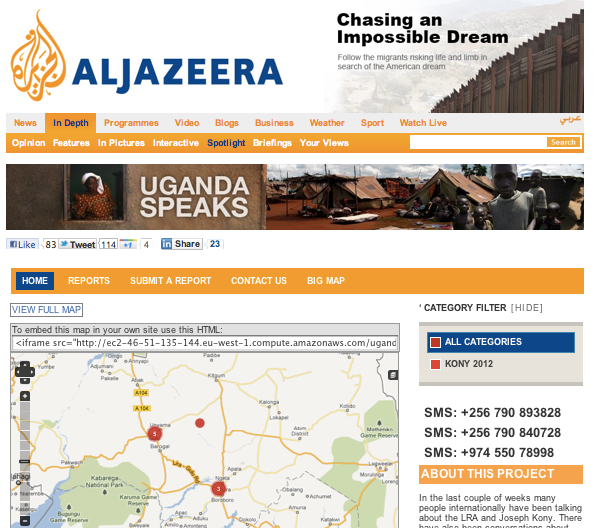
Uganda Speaks by Al Jazeera
Although Al Jazeera had started doing this kind of projects back in 2009 during the war on Gaza (the experiment’s page of the Al Jazeera Lab website has now disappeared but can be viewed through WebArchive.org), it picked up steam during Egypt’s 2011 Arab Spring where, due to lack of broadcast media coverage, protesters were using social media to bring attention to what was happening.
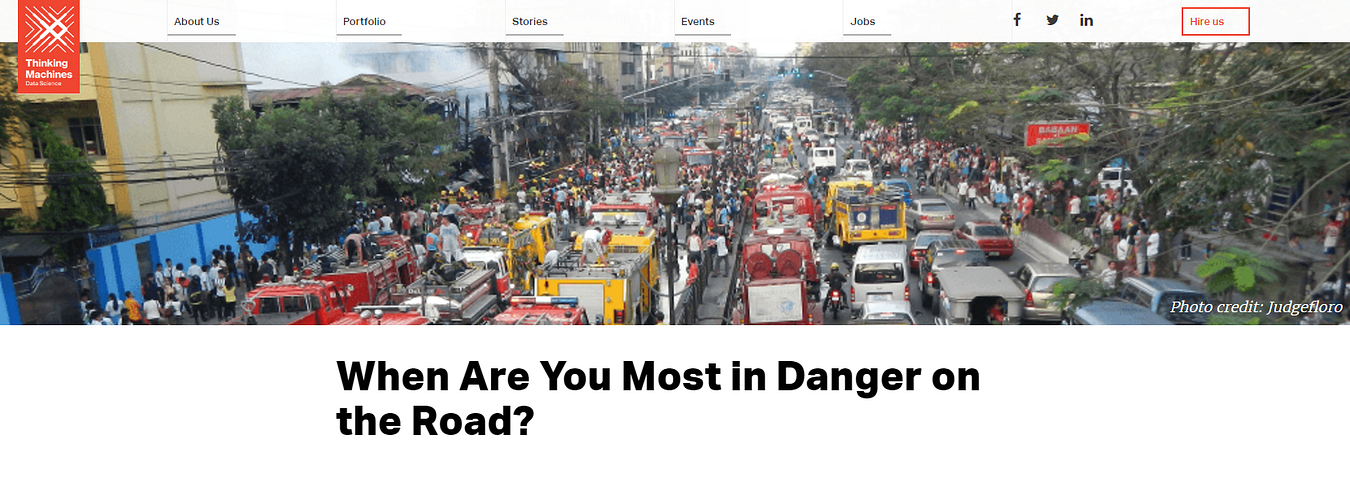
Interactive story by Thinking Machines
Stephanie Sy: Our first data journalism project as a team at Thinking Machines was a series of interactive stories on traffic accidents in Metro Manila. We cleaned and analysed a set of Excel sheets of 90,000 road accidents spanning 10 years.
It was the first project we worked on as a mixed team of journalists, designers, and data scientists, and the first time we tried to build something from scratch with d3.js! I worked on the d3 charts, and remember being in utter despair at how hard it was to get the interactive transitions to render nicely across different browser types. It was surprisingly well received by the local civic community, and that positive feedback emboldened us to keep working.
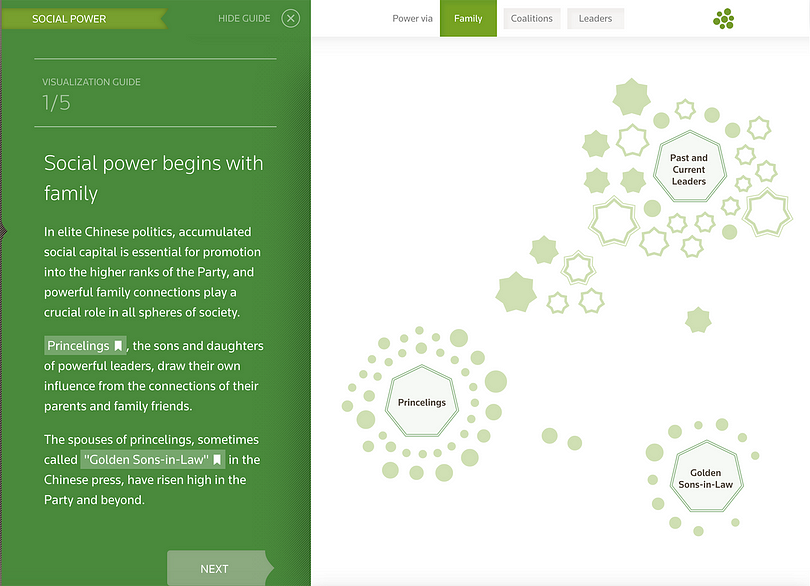
Connected China, Thomson Reuters
Yolanda Ma: One of my first projects was Connected China for Thomson Reuters, which tracked and visualised the people, institutions and relationships that form China’s elite power structure (learn more about it here).
This project taught me the importance of facts and every piece of data in it (thousands, if not millions in total) went through a rigid fact-checking process (by human beings, not machines, unfortunately). I learned by doing that facts are the bones of data journalism, not fancy visualisations, even though this project turned out to be fancy and cool, which is good too.
Now, what was the latest project you worked on and how do the two compare?
ED: Towards the end of last year, I taught a data journalism module to City University London Master’s students who were able to pull together their own data visualisation projects in the space of an hour. The biggest difference is how vastly the interfaces have improved and how quick and intuitive the designs and interactive softwares are now. There are a lot more companies switched on to storytelling beyond TV or text and that knowledge combined, how do you stand out in the world of online news?
Complementary to that Al Jazeera was always a front runner because they were willing to take risks and try something new when no one else was. In the newsrooms I’ve worked at or see since, there is still a general aversion to risk taking in preference of safety — though everyone knows that to survive and thrive in this digital media landscape, its risk taking, innovation that is going push those boundaries and really get you places.
SS: Our latest related data story is a piece we put together visualising traffic jams across Metro Manila during the holiday rush season. This time we were looking at gigabytes of Waze jams data that we accessed through the Waze API. It definitely grew out of our early work in transit data stories, but reflects a huge amount on growth in our ability to handle complex data, and understanding of what appeals to our audience.
One big piece of learning we got from this is that our audience in the Philippines mainly interacts with the news through mobile phones and via Facebook, so complex d3 interactives don’t work for them. What we do now is to build gifs on top of the interactives, which we then share on Facebook. You can see an example of that in the linked story. That gets us a tremendous amount of reach, as we’re able to communicate complex results in a format that’s friendly for our audience.
YM: I’ve been doing data journalism training mostly in the past few years and helping others do their data projects, so nothing comparable really. The latest project I worked on is this Data Journalism MOOC with HKU in partnership with Google News Lab. It is tailored-made for practitioners in Asia, and it’s re-starting again soon (begins March 6), so go on and register before it’s too late!
What excites you about the future of data journalism and interactive news?
ED: The ability to tell stories in a cleaner, more engaging way. Literally everything can be turned into a story just by interrogating the data, being curious and asking questions. The digital news world has always been driven by data and it’s exciting to see how “traditional” journalism is embracing this more. I love this example from Berliner Morgenpost where they charted this bus line in Berlin, combined with a dash cam comparing various data such as demographics, voting. Its an ingenious way of taking complex data and breaking it into a meaningful, engaging way rather than pie charts.

M29 from Berliner Morgenpost
SS: There are tremendous amounts of data being generated in this digital age, and I think data journalism is a very natural evolution of the field. Investigative journalists should be able to use computer science skills to find their way through messy datasets and big data. It’s absolutely reasonable to expect that a news organization might get a 1 terabyte dump of files from a source.
YM: It excites me because it is the future. We live in the age of data, and the inevitable increasing amount of data available means there is growingly huge potential for data journalism. People’s news consumption is also changing and I believe personalisation is one of the key characteristics for the new generation of consumers, which means interactive news — interactive in many different ways — will thrive.
How are Asian and Middle Eastern media organisations (depending on your experience) doing in terms of data journalism and interactive news compared to the rest of the world?
ED: I think Al Jazeera has always been a pioneer in this. They have a great interactive team that drew together people from various disciplines within the organisation — coders, video people, designers, journalists — before everyone else was doing it and they’ve been able to shed light on stories that wouldn’t usually be picked up on by mainstream media radars.
Example that illustrates my point: The project “Broken homes, a record year of home demolitions in occupied East Jerusalem” by Al Jazeera
SS: We have a few media organisations like the Philippine Center for Investigative Journalism, Rappler, and Inquirer who have been integrating data analysis into their reporting, but there isn’t anyone regularly producing complex data journalism pieces.
Our key problem is the lack of useful datasets. A huge amount of work goes into acquiring, cleaning, and triple checking the raw data. Analysis is “garbage in, garbage out” and we can’t create good data journalism without the presence of good data. This is where the European and North American media organisations have an edge. Their governments and civic society organisations follow open data standards, and citizens can request data [via FOIA]! The Philippine government has been making serious progress towards more open data sharing, and I hope they’re able to sustain that commitment.
Example that illustrates my point: PCIJ’s Money Politics project is a great example of an organisation doing the data janitorial work of acquiring and validating hard-to-find data. During our last presidential elections in 2015, GMA News Network and Rappler both created hugely popular election tracking live data stories.

PCIJ’s Money Politics
YM: Media organisations in Asia are catching up on data journalism and interactive news. There are some challenges of course, for example, lack of data in less developped countries, lack of skills and talents (and limited training opportunities), and even poor infrastructure or unstable internet especially in rural areas that would limit the presentation of news stories. Despite the difficulties, we do see good works emerging, though not necessarily in English. Check out some of the stories from the last GIJN’s Investigative Journalism Conference held in Nepal and you’ll get an idea.
Example that illustrates my point: This Caixin Media data story analysed and visualised the property market in China for the past few years.

Another New Normal, Caixin Media
What view do you have on the role of women in the world of news today? How is it being a woman in your respective work environment? Do you feel it makes a difference? If so, which one and why?
ED: Women are underrepresented not just in news coverage but in leadership positions too. I have to admit though that being at Deutsche Welle, I see a lot more women in senior management and it feels like a much more egalitarian working environment. However looking at my overall experience as a woman in news, you do face a lot of sexism and prejudice. Every woman I know has a story to tell and when the latest story about Uber came out a lot of my female colleagues around me were nodding their heads.
What got me through challenging times is having a fantastic network of female role models and mentors who are there to support you. That was one piece of advice I gave to prior teams, get a mentor. A lot of women feel isolated or feel the way they are treated is normal but it’s not. Women should also be aware that there is a real risk you will be punished if you speak up, challenge the status quo and tow the party line. If this happens, it’s an environment or team you probably shouldn’t be in anyway.
SS: It’s alarming to see parties around the world trying to stifle the voices of anyone who doesn’t belong and calling any news that doesn’t flatter them as “fake news.”. It’s important for us to speak up as women, and to practice intersectionality when it comes to other marginalised communities. As people who work with data, we can see past the aggregates and look at the complex messy truth. We must be able to communicate that complexity in order for our work to make a difference.
YM: Most of the data journalism teams in China are led by woman, and I think they are doing really well 🙂
What do you think makes a great data journalism project? What will you be looking for when marking projects for the Data Journalism Awards this year?
ED: Simplicity. It’s easy to get lost in data and try to do too much, but it’s often about taking something complex and making it accessible for a wider audience, getting them to think about something they haven’t or perhaps consider in a different way. I’ll be looking for the why — why does this matter, does this story or project make a dent in the universe?
After all, isn’t that what telling stories is about? The obvious thing that comes through is passion. It’s also something obvious but you can tell when a person or team has cared and really invested into the work versus projects being rolled off a conveyor belt.
SS: A great data journalism project involves three things: novel data, clever analytical methods, and great communication through the project’s medium of choice. I’m hoping to see a wide variety of mediums this year!
Will someone be submitting an audio data journalism project? With all the very exciting advances in the field of artificial intelligence this year, I’m also hoping to see projects that incorporate machine learning, and artificial intelligence.
YM: I believe data journalism is after all journalism — it has to reveal truth and tell stories, based or driven by data. I’ll be looking for stories that do make an impact in one way or another.
If you had one piece of advice for people applying for the Data Journalism Awards competition, what would it be?
ED: Don’t be intimidated by the competition or past award winners. Focus on what you do best. I say this especially for those applying for the first time, I see a lot of hesitation and negative self talk of ‘I’m not good enough’ etc. In every experience there’s something to learn, so don’t hesitate.
SS: Don’t forget to tell a story! With data science methods, it’s easy to get lost in fancy math and lose track of the narrative.
YM: Tell us a bit about the story behind your story — say, we may not know how hard it might be to get certain data in your country.
What was the best piece of advice you were ever given in your years of experience in the media industry?
ED: Take every opportunity. That’s related to a quote that has been coming up over and over again for the past week or so, “success is when preparation meets opportunity.”
SS: One of my best former bosses told me to imagine that a hungover, unhappy man with a million meetings that day was the only reader of my work. He haunts me to this day.
YM: I started my career with the ambition (like many idealistic young people) to change China. My first (and second) boss Reg Chua once said to me, don’t worry about changing China but focus on making small changes and work with a long-term vision. Sounds cliche.
He said that to me in 2012. The next year, together with two other friends I started DJChina.org, which started in 2013 as a small blog and now grown to be one of the best educational platforms for data journalism practitioners in China. The year after, in 2014, Open Data China was launched (using the domain name I registered a few years back), and indicated a bottom-up movement to push for more open data, which was incorporated into national policy within a year. So I guess all these proved that Reg was right, and it could be applied to anywhere, or anything. Think big, act small, one story (or project) at a time, and changes will happen.

left to right: Yolanda Ma (Data Journalism China), Esra Dogramaci (Deutsche Welle, formerly BBC and Al Jazeera), and Stephanie Sy (Thinking Machines)
Stephanie Sy is the founder of Thinking Machines, a data science and data engineering team based in the Philippines. She brings to the jury her expertise in data science, engineering and storytelling.
Yolanda Ma is the co-founder of Data Journalism China, one of the best educational platforms for data journalism practitioners in China. Not only representing the biggest country in Asia, she also has experience teaching data skills to journalists and a great knowledge of data journalism from her region.
Esra Dogramaci has now joined Deutsche Welle and formerly worked with the BBC, Al Jazeera in Qatar and Turkey, as well as the UN Headquarters and UNICEF. She brings to the DJA jury significant experience in digital transformation across news and current affairs, particularly in social video and off platform growth and development.
The Data Journalism Awards are the first international awards recognising outstanding work in the field of data journalism worldwide. Started in 2012, the competition is organised by the Global Editors Network, with support from the Google News Lab, the John S. and James L. Knight Foundation, and in partnership with Chartbeat. More info about cash prizes, categories and more, can be found on the DJA 2017 website.
Marianne Bouchart is the founder and director of HEI-DA, a nonprofit organisation promoting news innovation, the future of data journalism and open data. She runs data journalism programmes in various regions around the world as well as HEI-DA’s Sensor Journalism Toolkit project and manages the Data Journalism Awards competition.
Before launching HEI-DA, Marianne spent 10 years in London where she worked as a web producer, data journalism and graphics editor for Bloomberg News, amongst others. She created the Data Journalism Blog in 2011 and gives lectures at journalism schools, in the UK and in France.

